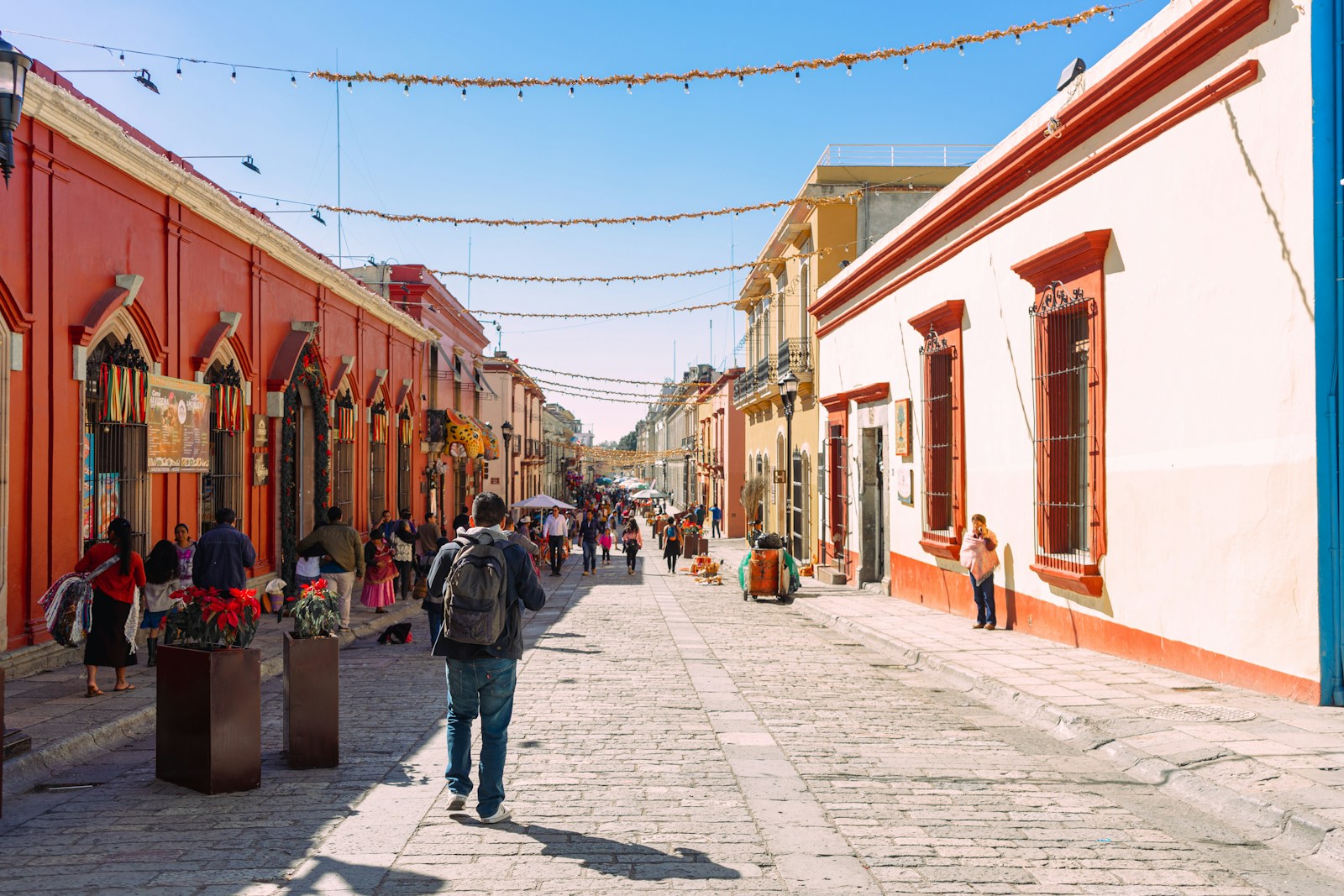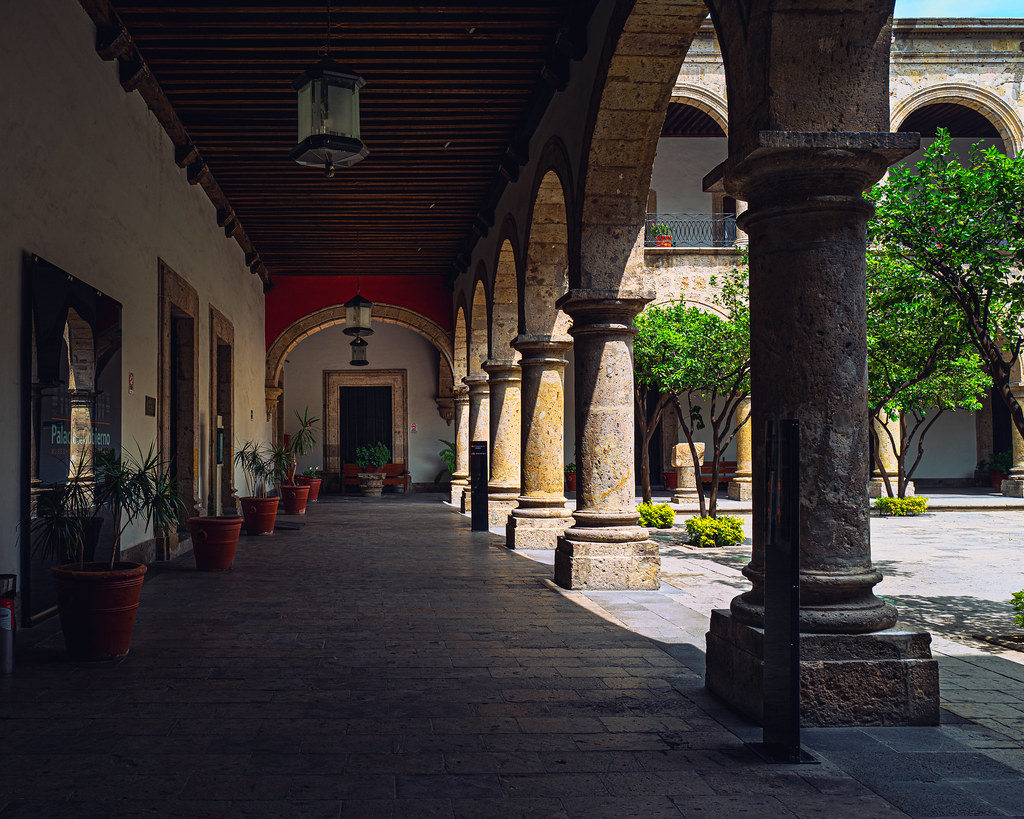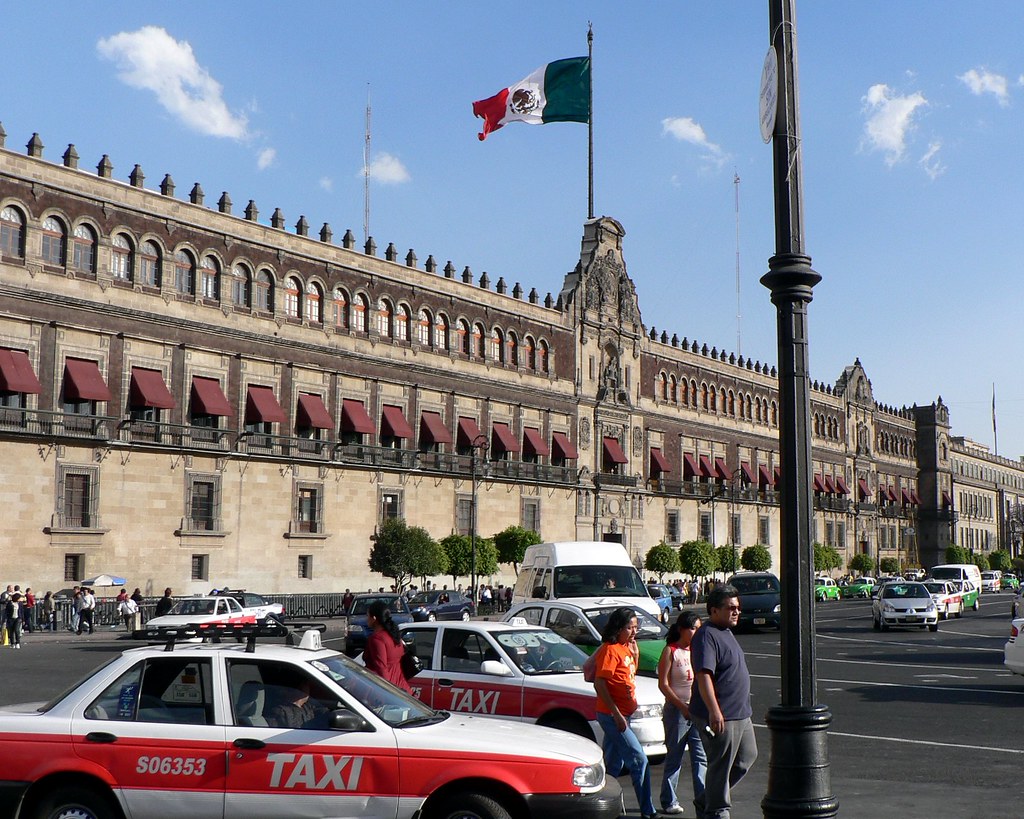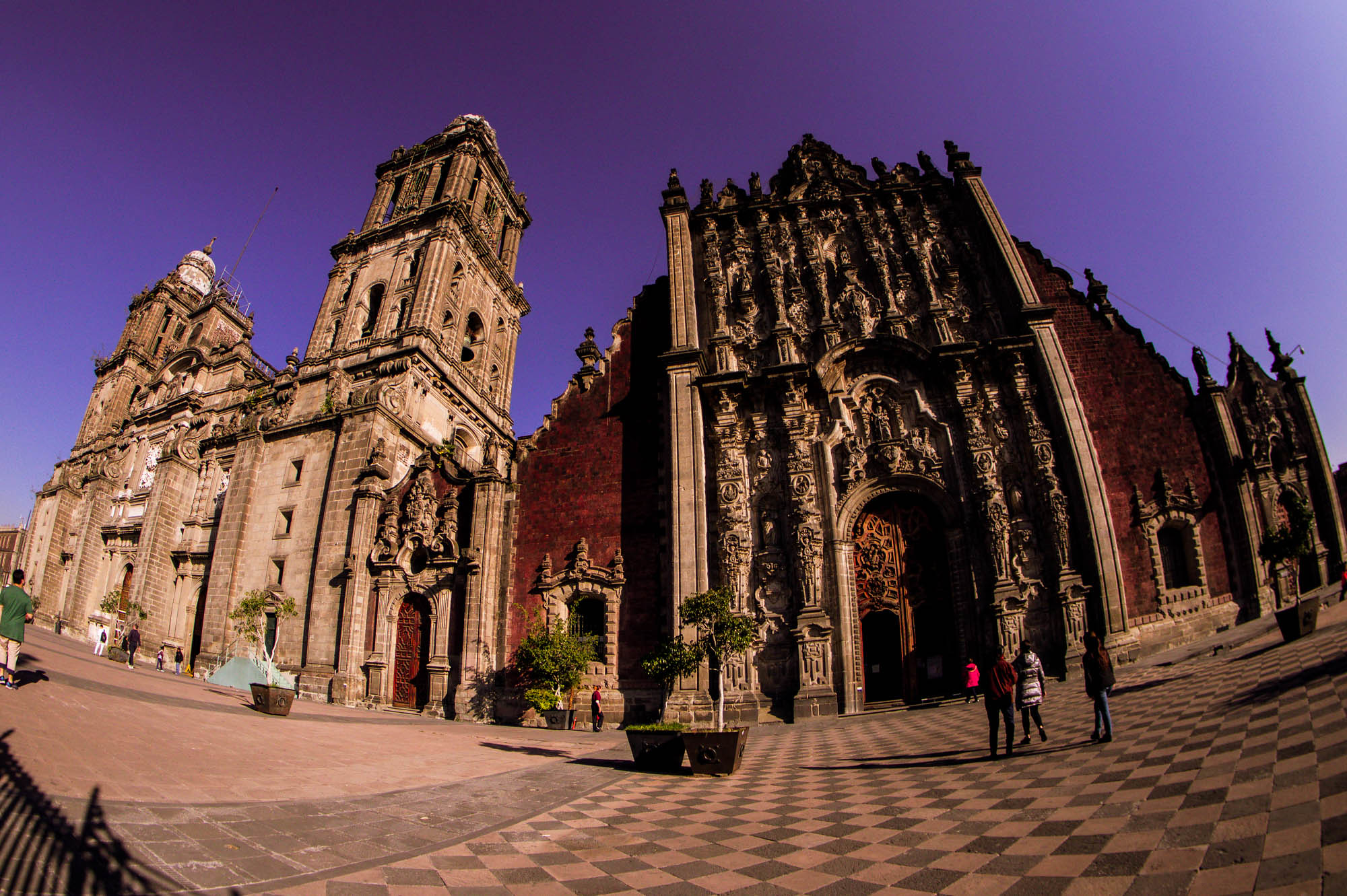Tepito
Tepito, a vibrant neighborhood in Mexico City, is renowned for its bustling market, El Barrio de Tepito, often referred to as the city’s largest “tianguis” or open-air
Welcome to the ultimate Mexico Travel Guide! As a seasoned travel planner, I’m delighted to share some of my learnings to help you navigate the enthralling beauty and culture of Mexico and ensure you make the most out of your journey. From its striking beaches, captivating ancient ruins, lush landscapes, bustling cities to its delectable cuisine, Mexico has an array of experiences that never fail to enchant its visitors. Every moment spent in this diverse country is an adventure; whether you’re soaking up the sun on the coast or exploring its dense mountains, there’s always something new and exciting to discover. This guide is designed to inspire you and help you plan your trip, with tips and recommendations suited to all interests. So gear up, join me and let’s uncover the magic of Mexico together for an unforgettable travel experience.

Mexico is a diverse country that offers something for every traveler, from magnificent ancient ruins to stunning beaches and vibrant cities. To make the most of your trip, it’s important to consider the best time to visit Mexico, taking into account weather conditions, festivals, and tourist crowds. This helpful Mexico travel guide to help you plan your visit and figure out what is the best time to visit Mexico.
The weather in Mexico can vary depending on the region you plan to visit. Generally, the country experiences two seasons: the dry season and the rainy season.
The dry season, which is also the peak tourist season, runs from November to April. During this time, Mexico enjoys pleasant weather, with mild temperatures and little rainfall. It’s an ideal time to explore popular tourist destinations like Mexico City, Cancun, and the Riviera Maya.
The rainy season begins in May and lasts until October. While rain showers are common during this time, they are usually short-lived and followed by sunny spells. The rainy season also coincides with lower tourist numbers and cheaper accommodations. If you don’t mind occasional rain showers, this time of the year can be a great opportunity to experience Mexico at lower costs and with fewer crowds.
Mexico is renowned for its vibrant festivals and cultural events, which are an excellent way to immerse yourself in the rich local traditions. Consider planning your trip around these festivities:
Mexico’s peak tourist season typically occurs during the dry season, from December to April, with December and January being the busiest months due to the holiday season. During this time, popular tourist destinations can be crowded, and prices for accommodations and flights tend to be higher.
If you prefer to avoid the crowds, consider visiting during the shoulder seasons (May to June and September to November) when tourist numbers are lower, and prices are more affordable. However, do note that the weather may be slightly unpredictable during these times.
Ultimately, the best time to visit Mexico depends on your personal preferences and what you want to experience during your trip. Consider the weather, festivals, and tourist crowds when deciding, and you’ll be sure to have a memorable time exploring all that Mexico has to offer.
Here’s is some information for our Mexico travel guide on various modes of transportation to help you reach your destination in Mexico. That being said the safest and quickest way is flying.
When it comes to air travel, Mexico has numerous major airports catering to international and domestic flights. Flights from the United States are typically inexpensive. Here are some popular airports to consider:
When booking flights, consider popular airline carriers serving Mexico:
If you prefer an adventure on the road or through the sea, there are other transportation options available:
While technically not a train that is taking you into Mexico. The El Paso border is accessible through U.S. passenger train services on the LA-Dallas route. Amtrak’s Sunset Limited service that plies routes such as New Orleans, Houston, Tucson, and LA is a popular choice among travelers. The Sunset Limited service connects with Amtrak’s Texas Eagle overnight at San Antonio, which operates from cities like Chicago, St Louis, Little Rock, and Dallas. It roughly takes a little more than 16 hours from LA, 19.5 hours from Houston, or a total of 26.5 hours from Dallas inclusive of an eight-hour halt at San Antonio, and for those trailing from Chicago, it’s about 48.5 hours.
Train arrivals from these services, approximately at 8am for LA, while for Chicago and New Orleans it’s around 4.15pm, provide adequate time for passengers to cross the border. Following this, individuals can grab a bite in Ciudad Juárez before hopping on a bus toward Mexico City. It’s advisable to visit the Amtrak website for the most up-to-date schedules.
There are a few ways to get to mexico by bus. Greyhound offers routes to multiple US border towns where you can then transfer to another company in Mexico. To streamline the process I would look into FlixBus who can map out the whole journey for you.
Crossing the border itself usually involves brief immigration procedures on both sides. The U.S.-Mexico border crossing is fairly straightforward as passengers are generally required to disembark the bus for customs inspection. After crossing the border, the bus continues its journey to the final destination in Mexico.
While it’s not my personal preference because I don’t like being on a ship for so long and you only get a limited amount of time at each destination. I do see the upside for a lot of people. Traveling to Mexico aboard a cruise ship presents a unique and indulgent way to explore the country’s charm, offering vacationers a fusion of luxury, convenience, and sight-seeing opportunities. Several top-rated cruise lines offer itineraries that include popular Mexican ports.
1. Carnival Cruise Line: Known for their fun-filled, family-friendly voyages, Carnival offers a range of cruises that stop at ports like Cozumel, Puerto Vallarta, and the stunning Cabo San Lucas.
2. Royal Caribbean International: Royal Caribbean offers cruises that take in the beauty of Mexico, stopping at popular ports like Ensenada, Costa Maya, and Cozumel. Their cruises offer a mix of relaxation and exhilarating activities.
3. Princess Cruises: Princess offers a series of Mexican Riviera cruises bringing you to the heart of Mexico, taking in ports like Mazatlán, Cabo San Lucas, and Puerto Vallarta.
4. Norwegian Cruise Line: Experience the rich Mexican culture with Norwegian Cruise Line, sailing to destinations like Cabo San Lucas, Puerto Vallarta, and Cozumel.
Ensure that you review cruise itineraries, inclusions, and terms before booking. Remember, your passport is required for cruising, and you will go through customs and immigration at each port.
Exploring Mexico’s diverse landscapes, vibrant cities, and cultural heritage is an unforgettable experience. To make the most of your journey, it’s essential to understand the various transportation options available. From airports to buses, trains, and car rentals, here’s our Mexico travel guide breakdown of the pros and cons of each mode of transportation in Mexico.
Mexico boasts numerous domestic airports that efficiently connect major cities and tourist destinations across the country. Here are some of the popular airports in Mexico:
Popular domestic airlines operating in Mexico include:
Pros:
Cons:
Various bus companies operate extensive networks throughout Mexico, providing an affordable and convenient method of transportation. Here are some popular bus service providers:
Pros:
Cons:
While train travel in Mexico isn’t as extensive or popular as bus or car travel due to a limited network, it can indeed be an enriching experience. It offers an opportunity to enjoy Mexico’s unique scenery at a leisurely pace, and it’s perfect for travelers looking for a bit of adventure.
Notably, the Chihuahua al Pacifico (Chepe) is one of the primary passenger services in Mexico. This train journey is renowned globally for its spectacular routes cutting across the rugged landscapes of the Sierra Madre Mountains, from the city of Chihuahua to the pacific coastal town of Los Mochis. This journey gives passengers an up-close look at Copper Canyon, a series of canyons larger and deeper than the Grand Canyon in the U.S.
Keep in mind, train travel can take longer than other modes of transportation, and services may not connect all tourist destinations. Luxury or first-class services often provide meals, snacks, and drinks, along with comfortable seating. Always check the latest schedules and fares before you plan your journey. Train travel through Mexico, while limited, can promise a distinct and unforgettable experience.
Pros:
Cons:
While I’m not sure I’m brave enough to do it. I know people who have because renting and driving a car in Mexico provides a sense of freedom and flexibility in your travel plans. Leading international car rental companies, as well as local firms, operate across major cities and airports, offering a range of vehicles to suit various travel needs. Feel free to use our partner at rentalcars.com to support the site.
With regards to safety, while many tourists enjoy incident-free road trips in Mexico, it’s important to stay alert and aware of your surroundings. Keep your doors locked and windows closed, especially in busy urban areas. Never leave valuables in the car and always use guarded parking lots wherever possible.
Pros:
Cons:
For those looking to travel to Mexico by sea, particularly from nearby coastal regions, ferries are an exciting option. The most popular Mexican ferry service links the mainland to the stunning island of Cozumel. Here’s the main ferry operator:
Planning a trip to Mexico? Here are 15 essential travel tips to help you make the most out of your visit:
Remember, Mexico is a diverse and enchanting destination with something for everyone. By following these travel tips, you can make your trip to Mexico truly memorable and rewarding.
Mexican cuisine is renowned for its vibrant flavors and mouthwatering dishes. When visiting Mexico, be sure to indulge in these must-try foods:
Alongside its exquisite cuisine, Mexico is known for its refreshing and vibrant beverages. Don’t miss these must-try drinks:
Exploring the vibrant flavors of Mexican cuisine is an essential part of any visit to Mexico. From savory tacos and rich moles to refreshing beverages like horchata and margaritas, you’re sure to have a taste bud-tingling experience in this culturally diverse country.
When planning a trip to Mexico, it’s essential to have an idea of the typical costs involved. This section will provide an overview of the costs of accommodations, food, transportation, and attractions in Mexico.
While traveling in Mexico, there are various accommodation options to suit every budget. Whether you prefer budget-friendly choices, mid-range comfort, or luxurious retreats, Mexico has it all.
For budget travelers, Mexico offers numerous hostels, guesthouses, and affordable hotels. These options typically range from $10 to $40 per night, depending on the location and facilities available. While they may be basic, they provide a comfortable and economical choice for travelers on a tight budget.
In Mexico, mid-range accommodations such as hotels, boutique resorts, and vacation rentals can cost between $60 and $150 per night. These options offer more amenities, including private bathrooms, air conditioning, and sometimes even swimming pools. It’s worth noting that prices may vary depending on the region and popularity.
Travelers looking for upscale accommodations can find luxury hotels, resorts, and villas throughout Mexico. These high-end options provide elegant rooms, exceptional service, and top-notch facilities like spa services, gourmet dining, and stunning beachfront locations. Prices for luxury accommodations generally range from $200 to $1000 per night or more, depending on the exclusivity and quality of the experience.
Mexican cuisine is renowned worldwide for its flavors and diversity. When it comes to dining in Mexico, you can find options to fit any budget.
Street food stalls, local markets, and casual eateries offer delicious and affordable meals for budget travelers. Here, you can try traditional favorites like tacos, quesadillas, and enchiladas for as little as $2 to $5 per meal, allowing you to experience a true taste of Mexico without breaking the bank.
If you’re looking for sit-down restaurants with more variety and ambiance, mid-range dining options are available. These restaurants typically offer a combination of Mexican and international cuisines. Prices for a meal at mid-range restaurants typically range between $10 and $30 per person, depending on the location and the dish’s complexity.
Mexico is home to world-class restaurants helmed by renowned chefs, offering an exceptional fine dining experience. These luxury restaurants showcase innovative menus and exquisite presentations, often featuring unique Mexican fusion cuisine. Prices at high-end restaurants can vary greatly, starting from $50 per person and reaching several hundred dollars, depending on the establishment and dining experience.
Getting around in Mexico is relatively affordable and offers various transportation options to suit different preferences and budgets.
Public Transportation: Mexico has an extensive public transportation network, including buses and metro systems in major cities. Prices for public transportation can range from $0.50 to $2 per trip, making it a cost-effective choice for traveling within cities or between nearby towns.
Taxis and Ride-Sharing: Taxis are widely available in Mexico, and their prices vary depending on the location and distance traveled. Ride-sharing services like Uber are also available in major cities, providing a convenient and often cheaper alternative to traditional taxis.
Rental Cars: Renting a car in Mexico is another popular option for travelers who prefer more flexibility and independence. Rental car prices vary depending on the vehicle type, duration, and insurance coverage. On average, you can find rental cars starting at $30 per day.
Mexico is rich in cultural, historical, and natural attractions. Here are some popular options and their typical prices:
Archaeological Sites: Exploring ancient Mayan or Aztec ruins is a must-do in Mexico. The entrance fees for popular archaeological sites like Chichen Itza, Tulum, or Teotihuacan can range from $5 to $15 per person.
National Parks and Natural Reserves: Mexico’s diverse landscapes offer breathtaking natural beauty. National park entrance fees usually range from $2 to $10 per person, depending on the park and activities available.
Beach Resorts: Enjoying Mexico’s stunning beaches often requires staying at a beach resort. Prices for beach club access or day passes can vary, ranging from $20 to $100 per person, depending on the resort’s exclusivity and amenities.
Museums and Galleries: Mexico has an abundance of cultural institutions. Museum ticket prices generally range from $2 to $10, and some may offer discounted rates on certain days or for specific visitor categories such as students or seniors.
Adventure Activities: Mexico offers thrilling activities like zip-lining, snorkeling, and scuba diving. Prices for adventure tours and activities can range from $30 to $150 per person, depending on the activity’s duration and complexity.
This
Tepito, a vibrant neighborhood in Mexico City, is renowned for its bustling market, El Barrio de Tepito, often referred to as the city’s largest “tianguis” or open-air

Discover the vibrant and mesmerizing waterways of Xochimilco, a must-visit UNESCO World Heritage Site located in the southern part of Mexico City. Renowned for its system of

Football enthusiasts, get ready to experience the thrill at Estadio Azteca, one of the world’s largest and most iconic football stadiums, nestled in the heart of Mexico

The Palacio de Gobierno del Estado de Jalisco is a historic government building located in Guadalajara, Mexico. This beautiful structure serves as the seat of the Jalisco

The National Palace is a historic building located in the heart of the city, offering visitors a glimpse into the country’s rich heritage and culture. Tickets: Tickets

Chipinque A.B.P. Ecological Park is a stunning natural sanctuary located in San Pedro Garza García, Mexico. This park offers visitors the chance to explore pristine wilderness and
Pujol, situated in the upscale Polanco district of Mexico City, is often regarded as one of the top restaurants in the world. Under the expert direction of
Fonda Margarita | La Estación, located outside Mexico City, is celebrated for its home-style traditional Mexican breakfast dishes that have delighted locals and visitors for years. With

Churrería El Moro, a cherished institution in Mexico City, has been enchanting residents and visitors alike with its heavenly churros and hot chocolate since 1935. Open late,
At Cantina La Mascota in Mexico City, a beloved local establishment, patrons can immerse themselves in a unique dining concept where a purchase of drinks rewards them
Panadería Rosetta, the brainchild of renowned chef Elena Reygadas, is a charming bakery nestled in Mexico City’s Roma district. Known for its selection of artisan pastries made
Restaurante Rosetta, situated in the cosmopolitan Roma district of Mexico City, is a renowned establishment headed by celebrated chef Elena Reygadas. It offers a uniquely captivating dining

Teotihuacán, Mexico Photos

Mexico City, Mexico Photos
• Create Travel Plans/Trips
• Collect Places You've Been
• Connect with Like-Minded Travelers
• Contribute to the Community by Posting New Recommendations
Already Registered? Login.
